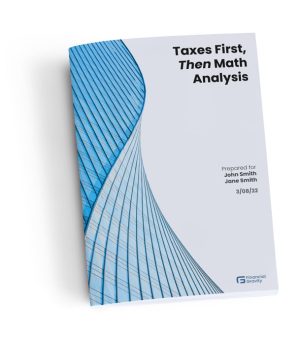Last week, Fitch, the British credit rating agency, downgraded the obligations of the U.S. Government from AAA to AA+. For some, Elizabeth Kubler-Ross came to mind. She is famous for coining DABDA, an acronym for the stages of grief. The first of these is denial, and that was on full display after Fitch’s downgrade hit the news cycle.
Janet Yellen, Secretary of the Treasury, described the downgrade as “arbitrary and based on outdated data…entirely unwarranted” and “puzzling.[1]” Former Treasury Secretary Larry Summers called it “bizarre and inept.”
Karine Jean-Pierre, speaking for the White House, said, “We strongly disagree with this decision,” before going on to blame the other Party, claiming it was “seeking to extend deficit-busting tax giveaways for the wealthy and corporations.”
DABDA refers to denial, anger, bargaining, depression, and acceptance. The S&P 500 appears to be in the bargaining stage, having lost 5% (as of this writing) of its value in the 17 days since the downgrade. The market had been on a nicely upward trajectory since its bottom on March 13, 2023, when it finished at 3,856. The market is currently at 4,360, so it appears to have taken the downgrade largely in stride.
AAA is the highest debt rating on Fitch’s creditworthiness scale, and AA+ is just one step down. Despite the denials of senior administration officials, it’s hard to consider a credit downgrade as a good thing. There are three major credit rating agencies: Fitch, S&P, and Moody’s. S&P downgraded U.S. debt in 2011. Moody’s continues to rate U.S. debt at its safest level.
Bond prices are affected by two things: duration, which means, essentially, how many years until the bond is redeemed, and credit, which refers first to the type of issuer (Muni, Treasury, Corporate, Junk, etc.), and then to the specific issuer. A downgrade is often associated with a hit to bond prices, as lower credit ratings typically mean a higher cost of borrowing.
The Council on Foreign Relations reported, “There is no near-term risk that the U.S. government will default. Fitch’s decision also doesn’t seem to have had a significant impact on the bond market.” So it’s possible that the deniers have a point. After all, if a credit rating falls in the forest and no one is there, does it make a sound?
The U.S. dollar is still the world’s reserve currency. The dollar accounted for roughly 60% of global currency reserves at the end of 2022[2]. The real effective exchange rate index has reflected growing U.S. dollar strength since it bottomed in 2011, and it is still comfortably above 100, the neutral point of the index.
Gold: Money, Currency, or Investment?
There has been a lot of talk recently about a new currency that’s intended to challenge the dollar’s dominance, backed by physical assets, and issued by the so-called BRICS countries, Brazil, Russia, India, China, and South Africa. This popular meme seems grounded more in speculation than fact, however: Anil Sooklal, South Africa’s Ambassador at Large, has said, “There has never been talk of a BRICS currency.” Talk about denial.
Much of this talk about a new BRICS currency is coming from companies that offer gold as an investment and even “gold IRAs.” These companies have created liquidity, and at least some measure of transparency, for gold. Is gold a sound investment? The two arguments consistently made in favor of gold are pretty prosaic: gold has never been worth zero, and an ounce of gold has always been able to purchase a man’s suit.
As for the first argument, gold is hardly unique. The U.S. stock market has never been worth zero, although some companies have gone bankrupt and become worthless (after their assets are sold off). The U.S. dollar has never been worth zero. Think of other commodities, such as metals, agricultural products, oil, and natural gas. None of them has ever been worth zero, either, and frankly, they are unlikely ever to be. So that argument seems to fail the common sense test.
It is said that George Washington bought a new, custom-made suit for his inauguration on April 30, 1789, which was performed just yards away from what would become the New York Stock Exchange just three years later. Legend has it that Washington used a one-ounce coin to buy that suit. Today, a bespoke suit can still be had for about $1,900, which is about what a troy ounce is worth.
By that standard, gold has kept up with inflation. But by that standard, can gold be said to have actually made any money? It sounds like a nice nominal return, but a real return, meaning after-inflation, of zero.
Contrast that with the return of the S&P 500 index, which has provided a nominal return of 1,205,048%, or 10.13% per year, since 1926[3]. The real return for that period was 6.96% per year, which means that $100 invested in 1926 would be worth about $70,000 today.
Although Mark Twain is credited with the statement, “Figures don’t lie, but liars figure,” we don’t really know who first uttered that sentence. Whoever said it has a point, though, when we look at how gold is marketed as an investment. Money.com reports that the average annual return of gold between 1971—when the dollar and gold were unlinked—and 2022, was 7.78%. That sounds good, particularly when compared with bank CDs, Treasurys, and the CPI.
But a closer look will reveal a deeper truth: gold has enjoyed sporadic run-ups and endured long stretches of negative growth. In 1971, when Richard Nixon ended the Bretton Woods System, which had tied the U.S. Dollar to gold, gold was a very stable commodity that traded at about $35 per ounce. After de-linking, gold enjoyed a rapid rise, touching $900 early in 1980. The late 1970s were a period of stagflation in the U.S., and interest rates were stratospherically high. Gold became known as a safe haven.
After the optimism associated with the economic expansion of the early 1980s, that safe haven was no longer as needed, and gold trended down, closing the decade at about $400 per ounce, less than half its January 1980 highs.
The decade of the 1990s was also rough on gold prices. The price of an ounce started that decade near $400 and finished at about $290, a loss of over 25%.
The Tech Wreck of 2001 brought that safe haven back to life, and gold soared in the 2000s, from the high $200s to about $1,100 by the end of 2009. The decade from 2010 to 2020 saw a continued run-up, to over $1,900 in 2011, before dropping dramatically, to about $1,050, in 2016. By the end of 2020, gold had risen again to nearly $1,550. The spot price at this writing is about $1,900.
What all this history reveals is that gold is risky. True, it’s never been worth zero, but it has seen decades-long, significant price declines, as well as rapid price hikes. The correlation between the U.S. economy and the U.S. stock market is obvious, but timing gold looks to be as difficult as timing the stocks. Reliably predicting the timing or movement of stocks has been shown to be nearly impossible, and we’d assert that that goes for gold, too.
There is one other salient fact, though, and it should not be overlooked. Stocks represent fractional ownership of going concerns, and gold does not. By its nature, gold is a speculative asset. While we can draw a connection between the profits of a company and its price, all we have to go on with gold is investor sentiment. Better, we suggest, to control the controllable and leave speculation to the gamblers.
To get our free Taxes First, Then MathⓇ analysis, click here and follow the instructions.
Sources:
[1] cnn.com
[2] rsmus.com
[3] officialdata.com




